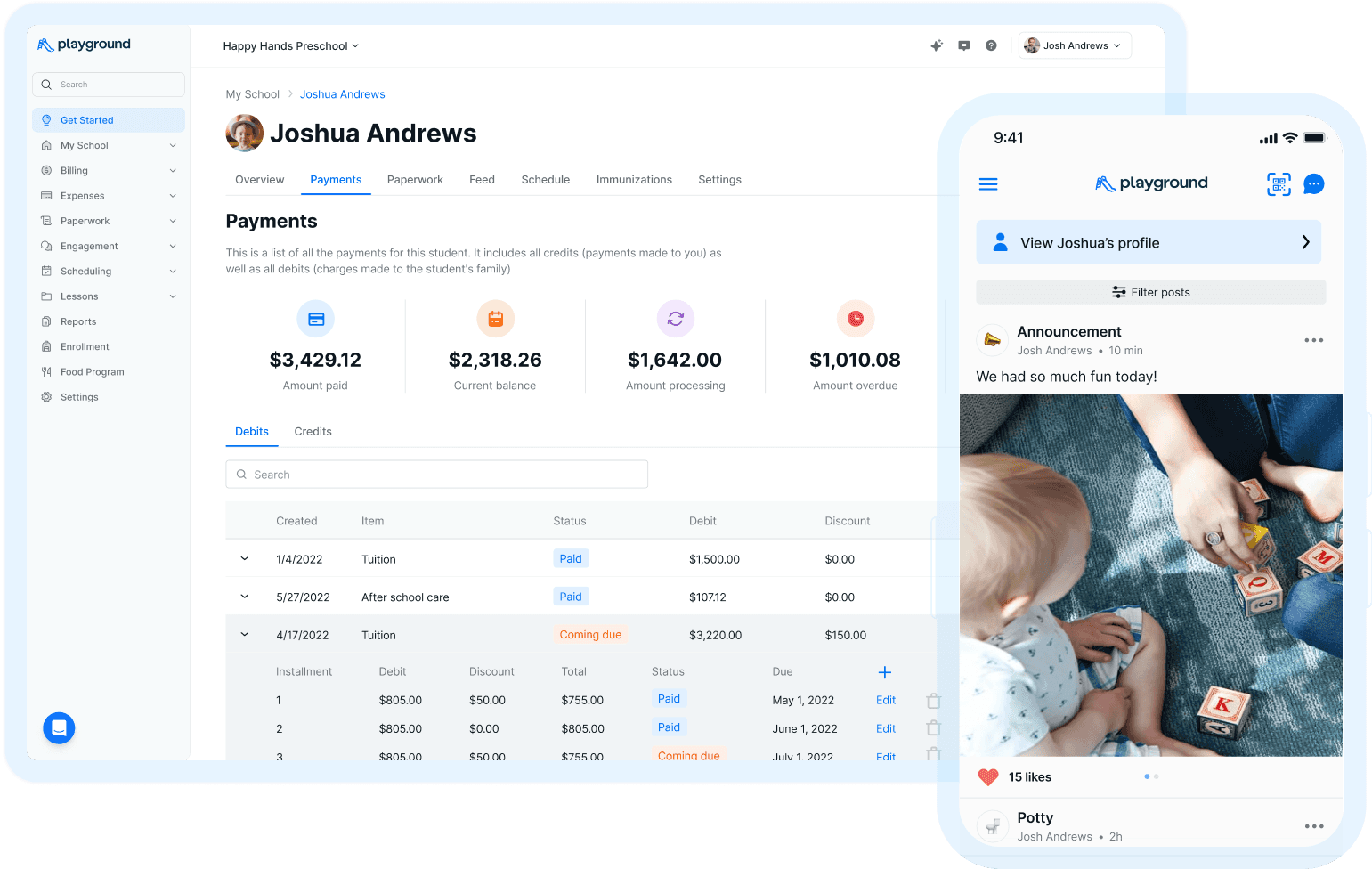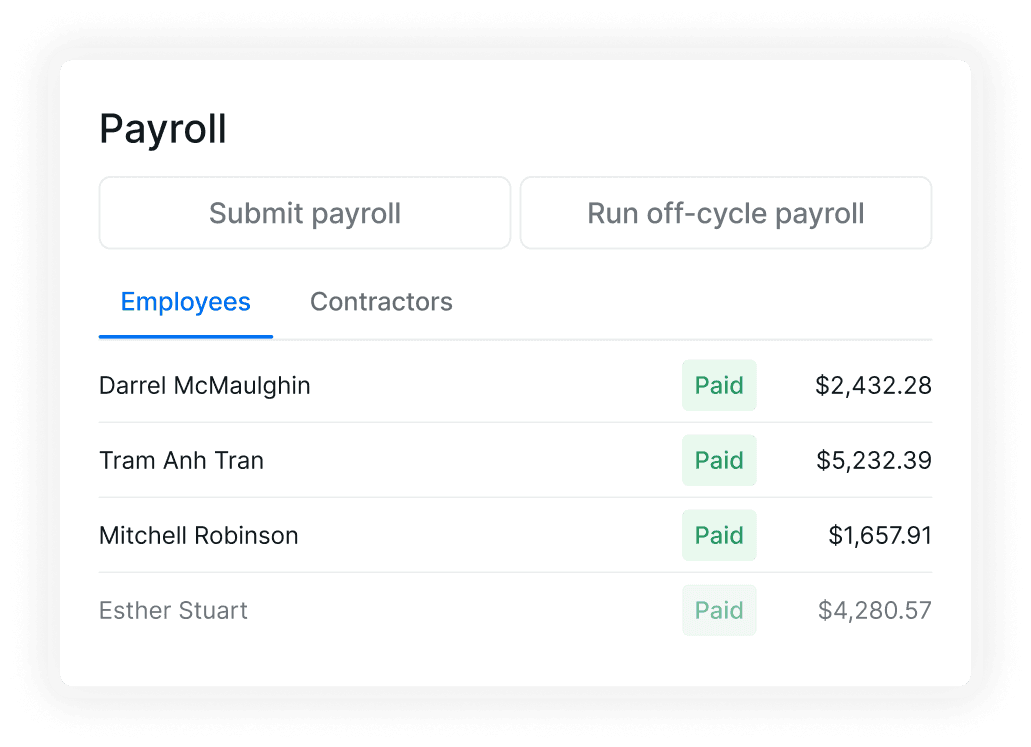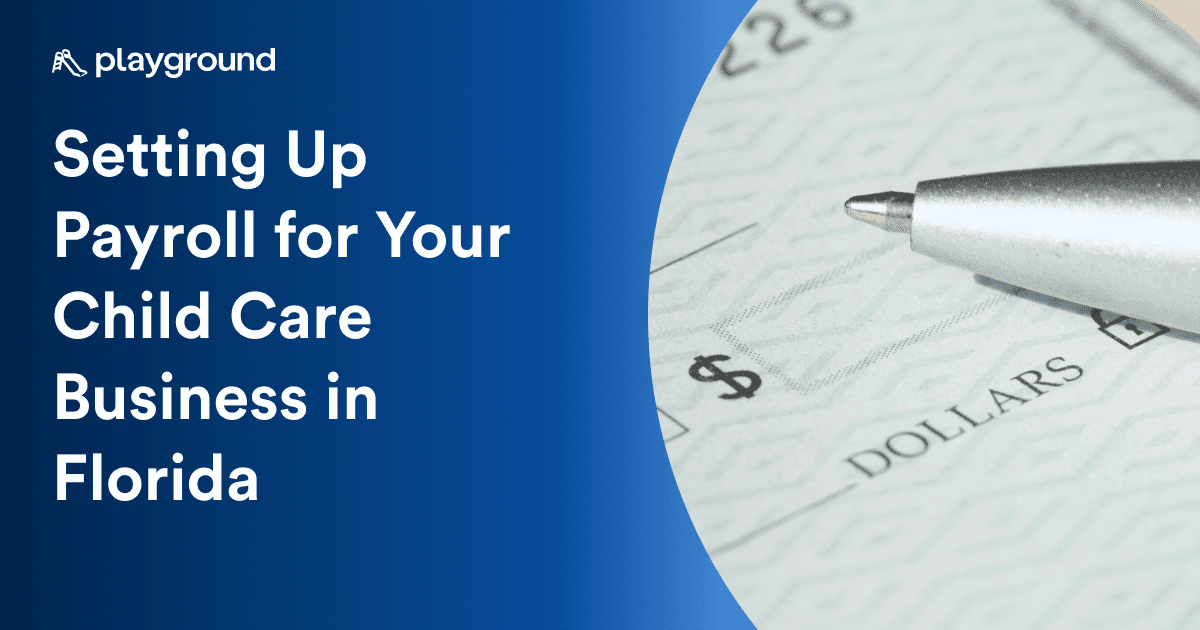How to Assess Child Care Tuition Costs


Tamar Andrews

Make your families & teachers happier
All-in-one child care management platform with billing, attendance, registration, communication, payroll, and more!
5.0 Rating

Make your families & teachers happier
All-in-one child care management platform with billing, attendance, registration, communication, payroll, and more!
5.0 Rating
Tuition is the number one source of revenue for the majority of child care centers nationwide. Charging too little and you are leaving revenue and profits on the table. Charging too much and you may be left with empty cots lost revenue as well. Assessing the tuition rates in your area, and then computing what you should charge based on what you are providing is essential to making your business profitable and successful. There is a “sweet spot” in tuition rates that maximize your potential revenue while also ensuring you are at maximum enrollment.
Understanding your region’s financial situation
Living expenses and income differs between regions and states in the United States. It is important that you are in the loop about the financial situation of your community to ensure your child care tuition reflects something reasonable to your market. Below are a few links you can use to understand the financial situation in your area of the United States.
For example, in California in 2018, you can see the average cost of child care by county.
You should also take note of the household median income in your area. Here we have it listed by state.
Here is another visual that you can use to find your exact area’s median income: http://www.energyjustice.net/justice/index.php?gsLayer=income
Contact your regional Child Care Resource and Referral staff to discuss what subsidies and government funding may be available to your center and families. Here you can locate the locate Child Care Resource and Referral agency in your area.
You will want to tap into any child care subsidies that families may take advantage of to help cover the costs of tuition at your child care home or center as well as any funds they may have to supplement you as well. For example, some will reimburse for CPR/First Aid training.
Understand your center’s strengths and areas for improvement
One you have gathered all this baseline information, you should then compare your center with those around you. Answer these questions:
How do your teacher-student ratios compare to the other local centers?
Do the teachers and staff in your program have more education or less than other programs?
Look at your facility and square footage, how does it compare to the competition?
Do you have something that is of added value such as a STEM program or meals?
What hours are you open compared to other programs?
What is staff turnover like at your center compared to others?
Is there something unique about your program? Religious affiliation? Saturday night child care?
Based off the answers to these questions, you should have a better idea of how your center stacks up to the local competition. If you feel you are higher quality than the providers around you, you should add 1-3% more in tuition for each area that you excel above your local programs. If you have less, then obviously you will want to decrease tuition and tout the fact that you are offering high quality at a more reasonable price.
If you find that you are offering substantially less than other programs, see what areas of improvement you can complete before the next round of enrollment begins. Advertise these improvements as well so that customers who may be talking about you have something positive to say.
US Average Child Care Cost
In 2022, the United States national average cost of child care was $14,760. Here is the average cost of childcare in the USA by state in 2022:
Alabama $6001
Alaska $12,120
Arizona $10948
Arkansas $6,890
California $16,945
Colorado $15,325
Connecticut $15,591
Delaware $11021
Florida $9238
Georgia $8520
Hawaii $13731
Idaho $7474
Illinois $13802
Indiana $12612
Iowa $10379
Kansas $11222
Kentucky $6411
Louisiana $7724
Maine $9449
Maryland $15335
Massachusetts $20913
Michigan $10861
Minnesota $16087
Mississippi $5436
Missouri $10041
Montana $9518
Nebraska $12571
Nevada $11408
New Hampshire $12791
New Jersey $12988
New Mexico $8617
New York $15394
North Carolina $9480
North Dakota $9091
Ohio $9697
Oklahoma $8576
Oregon $13616
Pennsylvania $11842
Rhode Island $13696
South Carolina $7007
South Dakota $6511
Tennessee $8732
Texas $9324
Utah $9945
Vermont $12813
Virginia $14063
Washington $14554
West Virginia $8736
Wisconsin $12567
Wyoming $10647
Source: The World Population Review
Tuition is the number one source of revenue for the majority of child care centers nationwide. Charging too little and you are leaving revenue and profits on the table. Charging too much and you may be left with empty cots lost revenue as well. Assessing the tuition rates in your area, and then computing what you should charge based on what you are providing is essential to making your business profitable and successful. There is a “sweet spot” in tuition rates that maximize your potential revenue while also ensuring you are at maximum enrollment.
Understanding your region’s financial situation
Living expenses and income differs between regions and states in the United States. It is important that you are in the loop about the financial situation of your community to ensure your child care tuition reflects something reasonable to your market. Below are a few links you can use to understand the financial situation in your area of the United States.
For example, in California in 2018, you can see the average cost of child care by county.
You should also take note of the household median income in your area. Here we have it listed by state.
Here is another visual that you can use to find your exact area’s median income: http://www.energyjustice.net/justice/index.php?gsLayer=income
Contact your regional Child Care Resource and Referral staff to discuss what subsidies and government funding may be available to your center and families. Here you can locate the locate Child Care Resource and Referral agency in your area.
You will want to tap into any child care subsidies that families may take advantage of to help cover the costs of tuition at your child care home or center as well as any funds they may have to supplement you as well. For example, some will reimburse for CPR/First Aid training.
Understand your center’s strengths and areas for improvement
One you have gathered all this baseline information, you should then compare your center with those around you. Answer these questions:
How do your teacher-student ratios compare to the other local centers?
Do the teachers and staff in your program have more education or less than other programs?
Look at your facility and square footage, how does it compare to the competition?
Do you have something that is of added value such as a STEM program or meals?
What hours are you open compared to other programs?
What is staff turnover like at your center compared to others?
Is there something unique about your program? Religious affiliation? Saturday night child care?
Based off the answers to these questions, you should have a better idea of how your center stacks up to the local competition. If you feel you are higher quality than the providers around you, you should add 1-3% more in tuition for each area that you excel above your local programs. If you have less, then obviously you will want to decrease tuition and tout the fact that you are offering high quality at a more reasonable price.
If you find that you are offering substantially less than other programs, see what areas of improvement you can complete before the next round of enrollment begins. Advertise these improvements as well so that customers who may be talking about you have something positive to say.
US Average Child Care Cost
In 2022, the United States national average cost of child care was $14,760. Here is the average cost of childcare in the USA by state in 2022:
Alabama $6001
Alaska $12,120
Arizona $10948
Arkansas $6,890
California $16,945
Colorado $15,325
Connecticut $15,591
Delaware $11021
Florida $9238
Georgia $8520
Hawaii $13731
Idaho $7474
Illinois $13802
Indiana $12612
Iowa $10379
Kansas $11222
Kentucky $6411
Louisiana $7724
Maine $9449
Maryland $15335
Massachusetts $20913
Michigan $10861
Minnesota $16087
Mississippi $5436
Missouri $10041
Montana $9518
Nebraska $12571
Nevada $11408
New Hampshire $12791
New Jersey $12988
New Mexico $8617
New York $15394
North Carolina $9480
North Dakota $9091
Ohio $9697
Oklahoma $8576
Oregon $13616
Pennsylvania $11842
Rhode Island $13696
South Carolina $7007
South Dakota $6511
Tennessee $8732
Texas $9324
Utah $9945
Vermont $12813
Virginia $14063
Washington $14554
West Virginia $8736
Wisconsin $12567
Wyoming $10647
Source: The World Population Review
Tuition is the number one source of revenue for the majority of child care centers nationwide. Charging too little and you are leaving revenue and profits on the table. Charging too much and you may be left with empty cots lost revenue as well. Assessing the tuition rates in your area, and then computing what you should charge based on what you are providing is essential to making your business profitable and successful. There is a “sweet spot” in tuition rates that maximize your potential revenue while also ensuring you are at maximum enrollment.
Understanding your region’s financial situation
Living expenses and income differs between regions and states in the United States. It is important that you are in the loop about the financial situation of your community to ensure your child care tuition reflects something reasonable to your market. Below are a few links you can use to understand the financial situation in your area of the United States.
For example, in California in 2018, you can see the average cost of child care by county.
You should also take note of the household median income in your area. Here we have it listed by state.
Here is another visual that you can use to find your exact area’s median income: http://www.energyjustice.net/justice/index.php?gsLayer=income
Contact your regional Child Care Resource and Referral staff to discuss what subsidies and government funding may be available to your center and families. Here you can locate the locate Child Care Resource and Referral agency in your area.
You will want to tap into any child care subsidies that families may take advantage of to help cover the costs of tuition at your child care home or center as well as any funds they may have to supplement you as well. For example, some will reimburse for CPR/First Aid training.
Understand your center’s strengths and areas for improvement
One you have gathered all this baseline information, you should then compare your center with those around you. Answer these questions:
How do your teacher-student ratios compare to the other local centers?
Do the teachers and staff in your program have more education or less than other programs?
Look at your facility and square footage, how does it compare to the competition?
Do you have something that is of added value such as a STEM program or meals?
What hours are you open compared to other programs?
What is staff turnover like at your center compared to others?
Is there something unique about your program? Religious affiliation? Saturday night child care?
Based off the answers to these questions, you should have a better idea of how your center stacks up to the local competition. If you feel you are higher quality than the providers around you, you should add 1-3% more in tuition for each area that you excel above your local programs. If you have less, then obviously you will want to decrease tuition and tout the fact that you are offering high quality at a more reasonable price.
If you find that you are offering substantially less than other programs, see what areas of improvement you can complete before the next round of enrollment begins. Advertise these improvements as well so that customers who may be talking about you have something positive to say.
US Average Child Care Cost
In 2022, the United States national average cost of child care was $14,760. Here is the average cost of childcare in the USA by state in 2022:
Alabama $6001
Alaska $12,120
Arizona $10948
Arkansas $6,890
California $16,945
Colorado $15,325
Connecticut $15,591
Delaware $11021
Florida $9238
Georgia $8520
Hawaii $13731
Idaho $7474
Illinois $13802
Indiana $12612
Iowa $10379
Kansas $11222
Kentucky $6411
Louisiana $7724
Maine $9449
Maryland $15335
Massachusetts $20913
Michigan $10861
Minnesota $16087
Mississippi $5436
Missouri $10041
Montana $9518
Nebraska $12571
Nevada $11408
New Hampshire $12791
New Jersey $12988
New Mexico $8617
New York $15394
North Carolina $9480
North Dakota $9091
Ohio $9697
Oklahoma $8576
Oregon $13616
Pennsylvania $11842
Rhode Island $13696
South Carolina $7007
South Dakota $6511
Tennessee $8732
Texas $9324
Utah $9945
Vermont $12813
Virginia $14063
Washington $14554
West Virginia $8736
Wisconsin $12567
Wyoming $10647
Source: The World Population Review
Playground is the only app directors need to run their early child care center. Playground manages billing, attendance, registration, communication, paperwork, reporting, and more for child care programs. 100,000+ directors, teachers, and families trust Playground to simplify their lives.
Learn more by scheduling a free personalized demo.
See what Playground can do for you
Learn how our top-rated child care management platform can make your families & teachers happier while lowering your costs



Explore more
Stay in the loop.
Sign up for Playground updates.
Stay in the loop.
Sign up for Playground updates.
Stay in the loop.
Sign up for the updates.
© 2024 Carline Inc. All rights reserved.

© 2024 Carline Inc. All rights reserved.

© 2024 Carline Inc. All rights reserved.

How to Assess Child Care Tuition Costs
Published Dec 19, 2022
|




